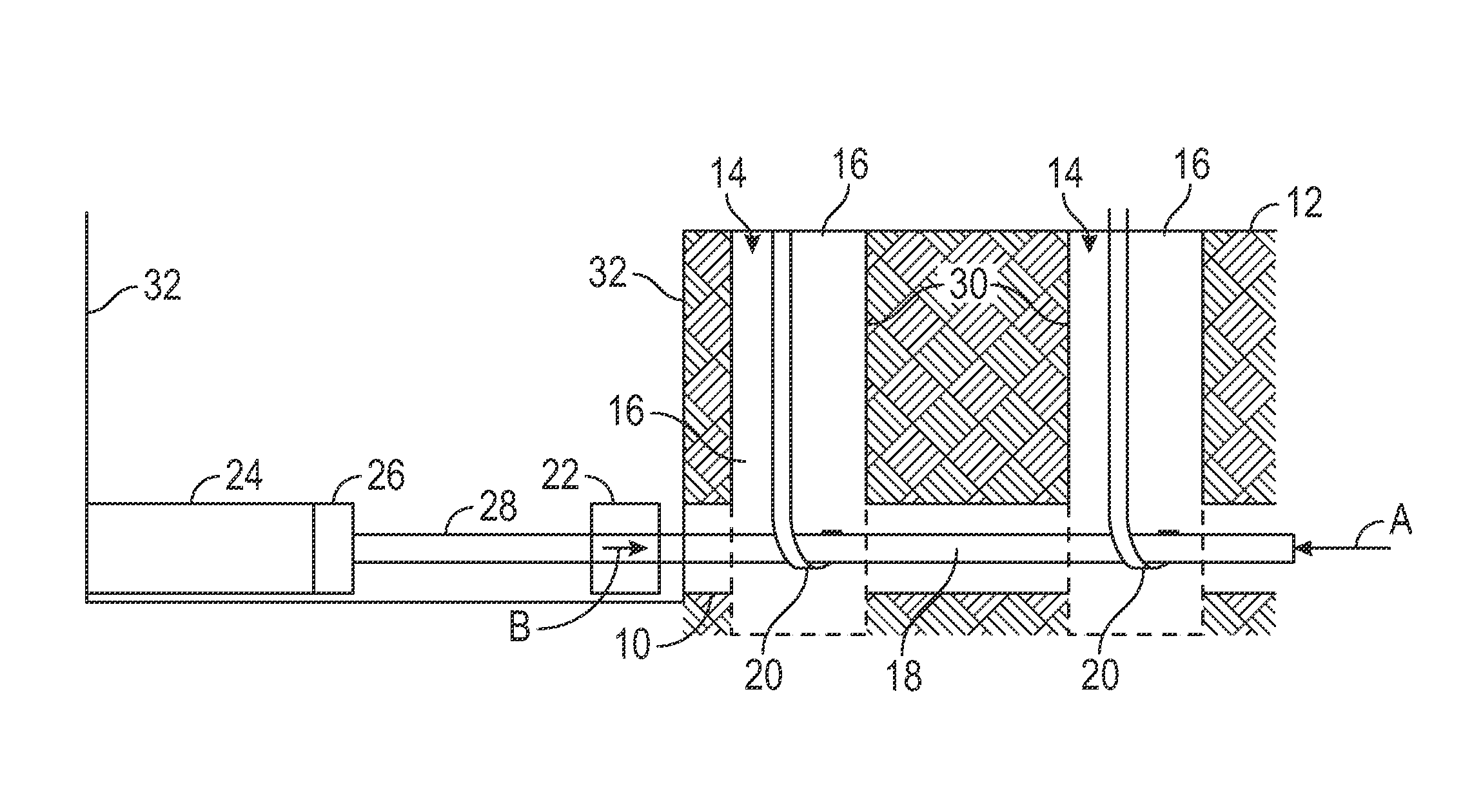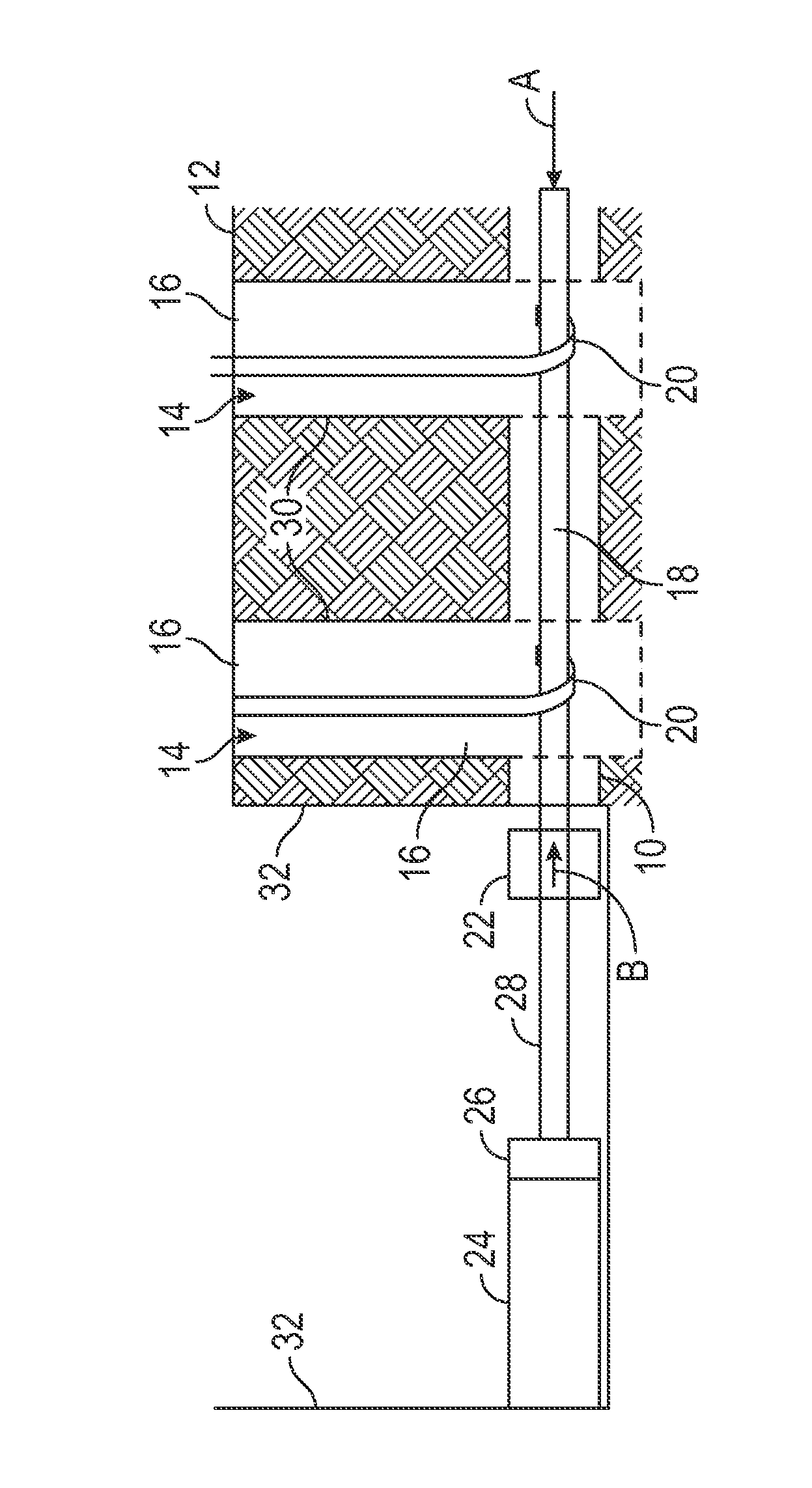Method of replacing an underground pipe section
a technology of underground pipes and pipes, applied in water installations, sewer systems, construction, etc., can solve the problems of lack of good methods of lubricating the pipes for installation, pipe bursting and pipe reaming have no way of controlling the grade, and the most disruption within the community where the most replacement is carried out, so as to reduce friction heat and abnormal wear.
- Summary
- Abstract
- Description
- Claims
- Application Information
AI Technical Summary
Benefits of technology
Problems solved by technology
Method used
Image
Examples
Embodiment Construction
[0016]The pipe replacement method of the present invention involves the grinding or breaking up of the old, existing pipe, followed by insertion or installation of a new pipe along the same pipe line. As seen in FIG. 1, the existing pipe 10 is buried beneath the surface of the ground 12. The first step of the method involves drilling a series or plurality of spaced apart, vertical sight relief holes 14 from the surface 12, through the existing pipe 10. Liquid is used in this drilling process to lubricate the drill and to form a slurry with the soil. The slurry fills the existing pipe, and may extend upwardly within the vertical sight relief holes 14. Then, a boring tool with a pilot stem 18 is used to drill a pilot hole in a first direction, indicated by arrow A in FIG. 1, through the slurry 16 in the existing pipe 10. A support member 20 is extending downwardly through each sight hole 14, with the lower end having a hook to support the pilot stem 18. The soil slurry 16 surrounds th...
PUM
 Login to View More
Login to View More Abstract
Description
Claims
Application Information
 Login to View More
Login to View More - R&D
- Intellectual Property
- Life Sciences
- Materials
- Tech Scout
- Unparalleled Data Quality
- Higher Quality Content
- 60% Fewer Hallucinations
Browse by: Latest US Patents, China's latest patents, Technical Efficacy Thesaurus, Application Domain, Technology Topic, Popular Technical Reports.
© 2025 PatSnap. All rights reserved.Legal|Privacy policy|Modern Slavery Act Transparency Statement|Sitemap|About US| Contact US: help@patsnap.com


